Porcelain Fused To Metal Dental Bridge
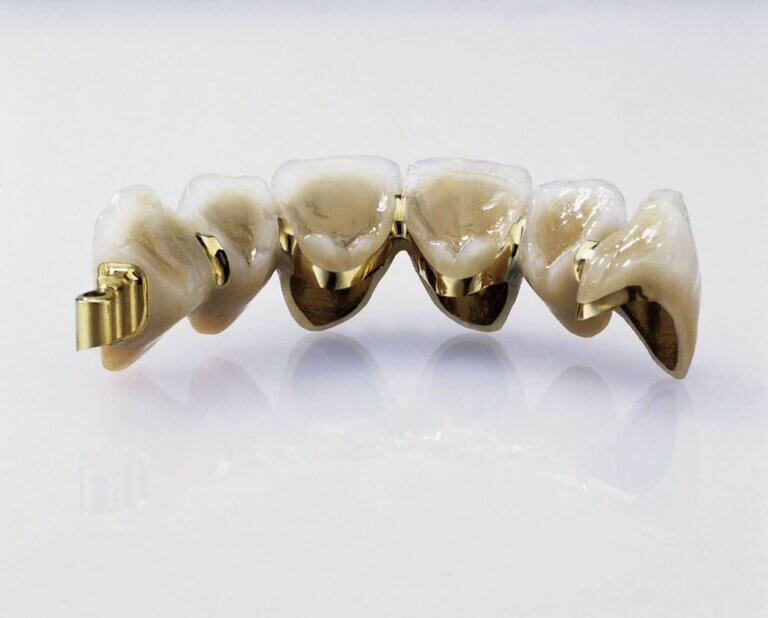
What Is A Porcelain Fused To Metal Dental Bridge?
If you’re missing one or more teeth, a dental bridge could be the solution to restore both the appearance and function of your teeth. Among the various types of dental bridges available, a Porcelain Fused To Metal (PFM) Dental Bridge stands as a popular choice for its durability, natural look, and functional benefits. It combines the strength of metal with the aesthetic appeal of porcelain, resulting in a restoration that seamlessly blends into your natural smile. Before deciding on whether A Porcelain Fused To Metal Dental Bridge are right for you, there are some things you should know:
- Who Needs A Porcelain Fused To Metal Dental Bridge?
- What Are The Advantages Of A Porcelain Fused To Metal Dental Bridge?
- What Are The Alternative Treatments If I Do Not Choose A Porcelain Fused To Metal Dental Bridge?
- How Much Does A Porcelain Fused To Metal Dental Bridge Cost?
- What Are The Steps In The Porcelain Fused To Metal Dental Bridge Procedure?
- Can I Have A Porcelain Fused To Metal Dental Bridge If I Am Pregnant?
- How Long Does A Porcelain Fused To Metal Dental Bridge Last?
- What Are Common Problems with A Porcelain Fused To Metal Dental Bridge?
If you have any further questions about A Porcelain Fused To Metal Dental Bridge or other dental services offered at Atlas Dental, please contact us.

Free phone consultation
Are you missing teeth and have questions about Dental Bridges? Schedule a free phone consultation with our GTA dentist.

5 star google reviews
Our patients love us! See why people are choosing Atlas Dental for Dental Bridges.

Book Emergency Bridge visit online
Have a problem with your Dental Bridge? Book An Emergency Dental Appointment Online.
Who Needs A Porcelain Fused To Metal Dental Bridge?
A PFM dental bridge can be a suitable solution for individuals who are facing the challenges posed by a missing tooth and are seeking an effective way to restore both the functionality and appearance of their smile. If you find yourself in any of the following situations, a PFM dental bridge might be the right option for you:
- Single or Multiple Missing Teeth: Whether you’re missing a single tooth or multiple teeth in a row, a PFM dental bridge can fill in the gaps and create a seamless, natural-looking smile.
- Unsuitable Candidates for Dental Implants: Dental implants are a popular choice for tooth replacement, but not everyone is an ideal candidate due to factors like bone density or health conditions. In such cases, a PFM dental bridge can provide a durable alternative for restoring your smile.
- Difficulty Chewing and Speaking: Missing teeth can make it challenging to chew your food properly or pronounce certain words. A PFM dental bridge can restore your ability to eat comfortably and communicate clearly.
- Preventing Dental Shifting: When a tooth is missing, the adjacent teeth can start to shift into the gap, causing misalignment issues. A PFM dental bridge helps maintain the proper spacing and alignment of your teeth.
- Preserving Facial Structure: Teeth play a crucial role in supporting the structure of your face. Missing teeth can lead to a sunken appearance and premature aging. A PFM dental bridge can help preserve your facial contours.
- Enhancing Aesthetics: PFM dental bridges are designed to mimic the natural color and translucency of teeth, ensuring a pleasing aesthetic result. This is especially important for visible areas of the mouth.
- Restoring Confidence: Missing teeth can impact your self-confidence and willingness to smile. A PFM dental bridge can give you back the confidence to share your smile with the world.
It’s important to note that while PFM dental bridges offer several benefits, not everyone is a candidate. A thorough examination and consultation with a dental professional are essential to determine if this type of bridge is suitable for your specific oral health needs and goals. If you have further questions about Porcelain Fused To Metal Dental Bridges, please contact us.
What Are The Advantages Of A Porcelain Fused To Metal Dental Bridge?
A porcelain fused to metal (PFM) dental bridge has several advantages that contribute to its widespread use:
- Natural Aesthetics: PFM dental bridges are designed to closely resemble the natural color and translucency of your teeth. The porcelain overlay provides a lifelike appearance, ensuring that the bridge seamlessly blends in with your existing teeth.
- Strength and Durability: The underlying metal framework in a PFM bridge provides exceptional strength and durability. This makes it a reliable option for replacing missing teeth in areas that endure chewing forces.
- Compatibility: The combination of metal and porcelain in a PFM bridge allows for compatibility with surrounding teeth and tissues. The metal framework provides stability, while the porcelain layer ensures an aesthetically pleasing look.
- Longevity: With proper care and maintenance, PFM dental bridges can last for a long time. Regular dental check-ups and good oral hygiene practices contribute to their longevity.
- Versatility: PFM dental bridges can be used to replace single missing teeth or multiple adjacent missing teeth. They are versatile solutions that address various levels of tooth loss.
- Comfortable Fit: PFM bridges are custom-made to fit your mouth perfectly. This ensures a comfortable fit that feels natural when you talk, eat, and smile.
- Stain Resistance: The porcelain material used in PFM dental bridges is stain-resistant, helping maintain their appearance over time.
As with any dental procedure, it’s essential to consult with a skilled and experienced dentist to determine whether a PFM bridge is the right option for your specific situation. Your dentist will evaluate your oral health, discuss your goals, and create a personalized treatment plan that aligns with your needs and preferences. If you have further questions about Porcelain Fused To Metal Dental Bridges, please contact us.
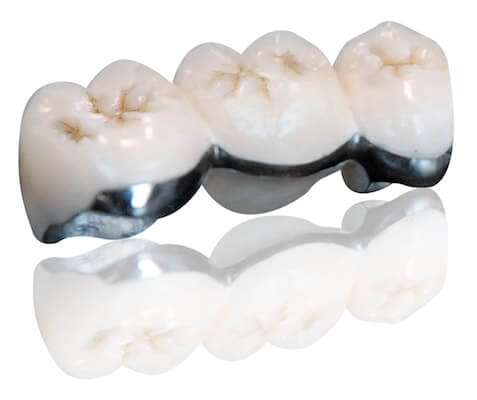
What Are The Alternative Treatments If I Do Not Choose A Porcelain Fused To Metal Dental Bridge?
While a porcelain fused to metal (PFM) dental bridge offers numerous advantages, it’s important to be aware of alternative treatment options available to you if you decide that a PFM bridge isn’t the right choice for your dental needs:
- Maryland Bridge: Also known as a resin-bonded bridge, a Maryland bridge is a conservative option suitable for replacing a single missing tooth. It involves attaching a pontic (artificial tooth) to the adjacent teeth using a metal or porcelain framework.
- Cantilever Bridge: This type of bridge is used when there is only one adjacent tooth next to the gap. The pontic is supported by a crown on the adjacent tooth, creating a cantilever structure. Cantilever bridges are typically used in low-stress areas of the mouth.
- Zirconia Bridge: Zirconia bridges offer excellent strength and durability, similar to PFM bridges, but without the metal framework. They are known for their biocompatibility and natural appearance.
- Lithium Disilicate Bridge: These bridges are made from a high-strength ceramic material and are known for their aesthetics and durability. They are a popular choice for visible areas of the mouth.
- Gold Bridge: Gold bridges are known for their longevity and biocompatibility. They are often chosen for their functional benefits and are less commonly used for aesthetic reasons.
- Dental Implant: Dental implants involve surgically placing a titanium post into the jawbone and attaching a crown or bridge to replace a missing tooth. Implants offer a long-term solution with minimal impact on surrounding teeth.
- Removable Partial Dentures: If you’re seeking a removable option, partial dentures might be suitable. These dentures are custom-made to fit your mouth and can replace one or more missing teeth. They are held in place by clasps that attach to existing teeth.
- No Treatment: While not a recommended solution, choosing to do nothing about a missing tooth can lead to various oral health issues. Adjacent teeth might shift, bite alignment can be compromised, and bone loss may occur over time.
Each alternative treatment comes with its own set of benefits and considerations. Factors such as cost, durability, aesthetics, and your overall oral health will influence which option is the best fit for you. Consulting with your dentist is important to receive personalized recommendations based on your unique situation. If you have further questions about Porcelain Fused To Metal Dental Bridges, please contact us.
Cost of Dental Bridge
Dental Bridges rely on retainers (natural teeth) to support pontics (false floating teeth where a tooth is missing). Therefore, the price of a dental bridge will depend on the number of pontics and retainers. A 3-unit bridge, for example, would cost $1207+538+1207 plus dental lab fee (approximately $800), which is equal to $3752. The codes relevant to dental bridges in the Ontario Dental Association’s Suggested Fee Guide appear as follows:
Pontics, Porcelain/Ceramic/Polymer Glass
- 62501 – Pontics, Porcelain/Ceramic/Polymer Glass Fused to Metal: $538 + Dental Lab Fee
Retainers, Porcelain/Ceramic/Polymer Glass
- 67201 – Retainer, Porcelain/Ceramic/Polymer Glass: $1207 + Dental Lab Fee
Other factors that could affect the cost of dental bridges include local dental association fee guides, dental bridge materials, qualifications of the dentist or prosthodontist, dental laboratory fees, and whether you have dental insurance coverage.
The Ontario Dental Association’s Suggested Fee Guide is a proposed fee structure that dentists in Ontario may or may not follow. Please consult with your dentist about fees before going ahead with treatment.
Dental bridges are sometimes considered a supplementary service by dental insurance plans and may or may not be covered by your dental insurance. Be sure to find out from your dental insurance plan provider how much you are eligible for before going ahead with dental treatment. Your dentist can help you submit an predetermination to your dental insurance.
For patients without dental insurance, Atlas Dental is pleased to offer dental financing through Dentalcard. Affordable payment plans start at 7.95% for terms of 6 months to 6 years. To learn more about Dentalcard dental treatment financing, follow this link.
What Are The Steps In The Porcelain Fused To Metal Dental Bridge Procedure?
The process of getting a Porcelain Fused To Metal Dental Bridge is a well-coordinated sequence of steps designed to ensure a seamless and successful outcome. Here’s an overview of the typical procedure:
- Initial Consultation: The process begins with a consultation with your dentist. During this appointment, your dentist will assess your oral health, discuss your goals and concerns, and determine whether a PFM dental bridge is the right solution for you.
- Treatment Planning: Once you decide to proceed with a PFM dental bridge, your dentist will create a comprehensive treatment plan tailored to your specific needs. This plan includes considerations for the number of missing teeth, the condition of your existing teeth, and your overall oral health. Please review these dental bridge pre-visit instructions before your appointment.
- Tooth Preparation: If the adjacent teeth to the gap left by the missing tooth are healthy, they will be prepared by removing a thin layer of enamel. This step ensures a proper fit for the dental bridge. In some cases, minimal tooth reduction is necessary for PFM bridges, preserving more natural tooth structure.
- Impressions And Shade Selection: Accurate impressions of your prepared teeth are taken using dental putty or digital scanning technology. Your dentist will also help you select a shade that matches the color of your natural teeth for a seamless blend.
- Temporary Bridge: While your permanent PFM dental bridge is being crafted in a dental laboratory, you’ll receive a temporary bridge to protect your prepared teeth and maintain your appearance.
- Bridge Fabrication: Skilled dental technicians use your impressions to design and craft your PFM dental bridge. They use advanced CAD/CAM technology to create a restoration that matches your natural teeth in color, shape, and size.
- Bridge Fitting: Once your PFM dental bridge is ready, you’ll return to the dentist’s office for a fitting. Your dentist will ensure that the bridge fits comfortably and makes any necessary adjustments to achieve optimal alignment and bite.
- Permanent Placement: With the perfect fit confirmed, the PFM dental bridge is securely bonded in place using dental cement. Your dentist will verify that the bridge integrates seamlessly with your natural teeth, creating a harmonious smile.
- Final Adjustments: Your dentist will make any final adjustments to ensure your bite is comfortable and natural. This step may involve refining the shape and alignment of the bridge for optimal functionality.
- Post-Placement Care: After the placement, your dentist will provide dental bridge post-insert instructions on how to care for your PFM dental bridge. Regular dental hygiene practices, such as brushing, flossing, and routine check-ups, are essential to maintaining the bridge’s longevity and your oral health.
By following these steps and collaborating closely with your dentist, you can expect to achieve a restored smile that enhances both your appearance and your overall quality of life. If you have further questions about Porcelain Fused To Metal Dental Bridges, please contact us.
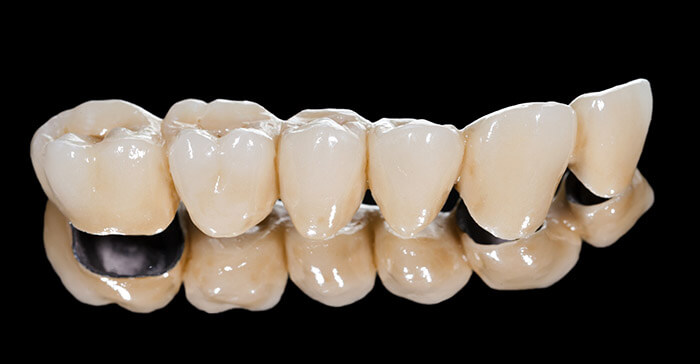
Can I Have A Porcelain Fused To Metal Dental Bridge If I Am Pregnant?
Pregnancy is a unique phase in a woman’s life that requires special considerations when it comes to healthcare decisions, including dental treatments. While maintaining good oral health is important during pregnancy, certain dental procedures, including getting a porcelain fused to metal (PFM) dental bridge, should be approached with caution and under the guidance of both your dentist and healthcare provider. Here are some factors to consider if you are pregnant and are contemplating a PFM dental bridge:
- Timing: The second trimester of pregnancy is generally considered the safest time for undergoing non-emergency dental treatments. During this period, the risk of potential harm to the developing fetus is minimized.
- Local Anesthetics: Local anesthetics are commonly used during dental procedures to ensure comfort. Most local anesthetics are considered safe during pregnancy, especially in the second trimester. However, it’s important to inform your dentist about your pregnancy so they can choose the most appropriate anesthetic.
- X-Rays: Dental X-rays emit low levels of radiation, and the risk to the fetus is minimal, especially if proper shielding is used. However, X-rays are typically avoided during pregnancy unless absolutely necessary. If an X-ray is essential for planning the PFM bridge placement, your dentist will take precautions to minimize exposure.
- Medications: Some medications, including antibiotics and pain relievers, may be prescribed during or after the PFM bridge procedure. Your dentist will select medications that are safe for pregnant women.
- Stress and Anxiety: Pregnancy can sometimes be accompanied by heightened stress and anxiety. If you’re concerned about dental treatments during pregnancy, discussing your worries with your dentist can help alleviate your concerns and allow for better planning.
- Consultation with Healthcare Provider: Before undergoing any dental procedure, especially if you’re pregnant, it’s crucial to consult with your obstetrician or healthcare provider. They can assess your overall health and provide guidance on the most appropriate timing and precautions for the dental procedure.
Ultimately, the decision to have a PFM dental bridge during pregnancy will be made based on careful consideration of your health, the specific circumstances, and the guidance of your healthcare provider and dentist. Open communication between all parties involved is crucial to ensure the best possible outcome for both your dental health and the health of your baby. If you have further questions about Porcelain Fused To Metal Dental Bridges, please contact us.
How Long Does A Porcelain Fused To Metal Dental Bridge Last?
On average, a well-maintained PFM dental bridge can last anywhere from 10 to 15 years, and even longer in some cases. The longevity can vary based on individual factors and the care you provide for your oral health.
- Maintenance and Oral Hygiene: Proper oral hygiene practices play a significant role in extending the lifespan of your PFM dental bridge. Brushing, flossing, and regular dental check-ups are essential to prevent the buildup of plaque and bacteria that can lead to decay and damage.
- Diet: A balanced diet that’s low in sugary and acidic foods can help protect both your natural teeth and your dental bridge. Avoiding hard or sticky foods that could put excessive pressure on the bridge is also recommended.
- Wear and Tear: PFM bridges are designed to withstand the forces of chewing and biting. However, habits like grinding or clenching your teeth can place excessive stress on the bridge and compromise its longevity.
- Proper Fit: A well-fitted PFM bridge is less likely to experience problems. Regular dental visits allow your dentist to monitor the fit and make any necessary adjustments to ensure proper function and comfort.
- Material Quality: The quality of the materials used in the construction of the PFM bridge plays a role in its lifespan. Higher-quality materials tend to offer better durability and aesthetics.
- Gum and Bone Health: The health of the surrounding gums and bone is crucial to the stability of the PFM bridge. Gum disease or bone loss can impact the bridge’s longevity.
- Bite and Grinding: If you have a habit of grinding your teeth (bruxism) or if your bite is misaligned, it can put extra stress on the bridge and its supporting teeth, potentially shortening its lifespan.
If you notice any issues such as discomfort, a loose bridge, or changes in your bite, it’s important to consult your dentist promptly to address the problem and prevent further complications. If you have further questions about Porcelain Fused To Metal Dental Bridges, please contact us.
What Are Common Problems with A Porcelain Fused To Metal Dental Bridge?
While porcelain fused to metal (PFM) dental bridges are designed to be durable and long-lasting, like any dental restoration, they can encounter certain issues over time. Being aware of these potential problems can help you address them promptly and maintain the integrity of your bridge. Here are some common problems that can arise with PFM dental bridges:
- Underlying Tooth Decay: While the porcelain covering of the bridge is resistant to decay, the natural teeth that support the bridge can still be susceptible to cavities. If these teeth develop decay, it can compromise the bridge’s stability. Maintaining good oral hygiene and regular dental check-ups is crucial to prevent decay around the bridge.
- Bridge Fractures: Porcelain can chip or fracture if subjected to excessive force, such as biting down on hard objects or grinding teeth. If a piece of porcelain breaks off, it may need to be repaired or replaced.
- Gum Disease: Inadequate oral hygiene can also lead to gum disease around the bridge area. Gum inflammation and infection can affect the bridge’s stability and long term survival.
- Loose Bridge: If the bridge becomes loose, it might need to be re-cemented. A loose bridge can create discomfort and impact its functionality.
- Tooth Sensitivity: Some patients may experience tooth sensitivity after getting a PFM dental bridge. Sensitivity can occur due to changes in tooth structure during the bridge preparation process.
- Discoloration: Over time, the porcelain covering of the bridge may become discolored, affecting its aesthetic appeal. Regular cleaning and avoiding staining substances can help prevent this issue.
- Allergic Reactions: In rare cases, individuals may have allergies or sensitivities to the metals used in the bridge’s framework. This can lead to discomfort or irritation.
- Bruxism Impact: Individuals who grind or clench their teeth (bruxism) can put extra stress on the dental bridge, potentially leading to damage or failure over time. A night guard can help protect the bridge if you have this habit.
- Wear and Tear: Over the years, normal wear and tear can affect the bridge’s integrity, causing it to become less secure or altering its appearance.
Regular dental check-ups are essential for detecting and addressing these issues early on. If you experience any discomfort, changes in bite, or notice problems with your PFM dental bridge, it’s important to consult your dentist promptly to ensure the long-term success of your dental restoration. If you have further questions about Porcelain Fused To Metal Dental Bridges, please contact us.
We also think you’ll like…
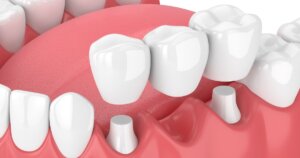
Dental Bridge
Dental Bridge What Is A Dental Bridge? When it comes to maintaining a healthy and beautiful smile, Dental Bridges play a crucial role in restoring
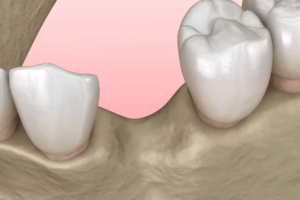
Dental Bone Loss
Dental Bone Loss What Is Dental Bone Loss? Dental bone loss, also known as periodontal bone loss or alveolar bone loss, refers to the loss
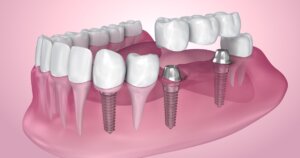
Dental Implants
Dental Implants What are Dental Implants? Dental Implants are revolutionary replacements for missing teeth that not only look and feel like natural teeth but also

Dental Implant Bridge
Dental Implant Bridge What Is A Dental Implant Bridge? A dental implant bridge is a prosthetic device used to replace one or more missing teeth
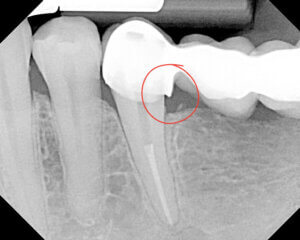
Dental Bridge Overhanging Margin
Dental Bridge Overhanging Margin What Is A Dental Bridge Overhanging Margin? A Dental Bridge is a prosthetic dental appliance that is used to replace one
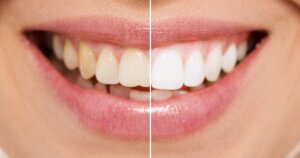
Smile Makeover
Smile Makeover What Is a Smile Makeover? A confident smile can brighten up a room and leave a lasting impression. It is a reflection of

